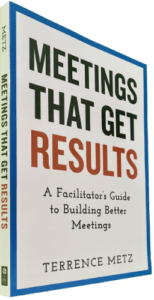Before we get to the 13 steps, let’s talk about what we mean by Collaboration and Innovation Hub.
A Collaboration and Innovation Hub is a dedicated team that serves as the engine for enhancing teamwork, facilitating strategic dialogues, and sparking creative breakthroughs across all levels of an organization.
Not only does it capture the intent of a facilitation department’s mission more vividly because its role is fostering collaborative processes and driving innovation within the organization, it provides a more dynamic and engaging portrayal of a facilitation department.
For us, at the heart of an Agile Mindset, Change Management, Quantum Management, and Zero-distance models, you should find a Collaboration and Innovation Hub.
Our vision of a Hub is not just about guiding efficient meetings; it’s a central resource to empower employees, catalyze change, and nurture a culture of ongoing improvement and innovation.
Building Capacity
The Collaboration and Innovation Hub represents a center for learning and development. The Hub offers training sessions and resources that enhance facilitation skills across the organization. By empowering associates with these skills, the Hub ensures the principles of effective collaboration and innovation are embedded in every team’s DNA. Facilitation skills dramatically increase the amount of meetings that get results.
Cultivating Collaboration
Recognizing that the synergy of diverse perspectives fuels innovation, the Collaboration and Innovation Hub specializes in crafting environments where voices are heard, ideas flourish, and collective wisdom guides decision-making. The Hub provides a place where barriers are broken down and teams are united in pursuit of common goals.
Fostering Innovation
The forefront of the Hub’s endeavors drives to foster an organizational mindset where innovation thrives. Through carefully designed ideation sessions and creative problem-solving workshops, the Collaboration and Innovation Hub challenges teams to think differently. With professional facilitation, the Hub encourages a culture where innovation is not just welcomed but actively pursued.
Leveraging Technology
In today’s hybrid work environment, the Hub embraces cutting-edge digital tools to bridge physical distances and foster seamless collaboration. Along with dynamic face-to-face sessions, by using virtual whiteboards and collaborative platforms, the Hub ensures that teams can connect, create, and innovate, regardless of where they are located.
Measuring Impact
With a commitment to continuous improvement, a Collaboration and Innovation Hub regularly evaluates the effectiveness of its facilitation practices. Through feedback mechanisms and performance metrics, the Hub adjusts its strategies to maximize its impact on organizational effectiveness and innovation.
Mission-driven Facilitation
The Hub’s mission extends beyond conventional facilitation by creating meaningful interactions that lead to actionable insights. By employing a blend of advanced facilitation techniques, the Hub ensures that every meeting, workshop, and structured[1] discussion provides an opportunity for growth and alignment.
The Collaboration and Innovation Hub aspires to be more than a facilitation department. The Hub provides a strategic partner in driving an organization’s success through enhanced collaboration, strategic innovation, and engaged leadership. The Hub represents where the future of work is being shaped, today.
13 Essential Steps to Create a Thriving Collaboration and Innovation Hub
Building a facilitation Hub effectively supports and enhances an organization’s collaborative processes, decision-making, and innovation capabilities. Here’s a framework for building a department, group, or team sponsored by a Collaboration and Innovation Hub:
1. Define the Purpose, Scope, and Objectives of Your Innovation Hub
- Identify Needs: Assess the organization’s needs for facilitation services, including areas like problem-solving, planning of all types, team development, conflict resolution, and innovation workshops.
- Clearly define what the Hub aims to achieve within the context of the organization’s overall strategy.
- Using frameworks like RenDanHeYi (RDHY) and SAFe, focus on enabling organizations to realign around customer outcomes through entrepreneurial teams and centralized services. Use these principles to build a Hub that supports organizational agility and customer-centric innovation.
- Confirm alignment with the organization’s vision, goals, and values ensuring all members understand and commit to this shared direction.
2. Secure Leadership Buy-in and Support
- Present Benefits: Articulate the value and benefits of having a dedicated facilitation group, including improved meeting efficiency, enhanced decision-making, and increased employee engagement.
- Outline Costs: Provide a clear budget for the Hub, including staffing, training, and resources.
3. Develop a Talent Acquisition Strategy
- Identify Skills: Determine the skills and qualifications required for department members, focusing on facilitation expertise, knowledge of group dynamics, communication skills, and familiarity with various facilitation methods and tools.
- Recruit Diversely: Aim for a team with diverse skills and backgrounds to support a wide range of stakeholder needs.
4. Create a Learning and Development Path for Innovation Hub Associates
- Foundational Training: Ensure all team members have training in core facilitation skills, methods, and tools.
- Continuous Learning: Offer continuous training and development opportunities for facilitators, focusing on enhancing their skills in leading effective meetings and workshops. This includes mastering facilitation tools, emotional intelligence, strategic questioning, and conflict resolution approaches.
5. Establish Innovation Hub Approaches and Methods
- Develop Frameworks: Create standardized facilitation frameworks and methods that can be adapted to different organizational contexts.
- Create Tools and Resources: Develop facilitation tools, templates, and resources that support the Hub’s work.
- Facilitate the Transformation of Vague Indicators into SMART Measures: Work on transitioning from subjective discussions to objective, evidence-based action plans by establishing SMART (Specific, Measurable, Adjustable, Relevant, Time-based) measures and criteria. Removing vagueness is essential for transforming abstract ideas into concrete actions and outcomes.
6. Enhance Interconnectedness and Collaboration
- Bridging Distances: Minimize perceptual and physical gaps among team members, thus fostering a sense of interconnectedness, ensuring that everyone feels engaged and part of a unified effort.
- Promoting Inclusive Communication: Encourage open, inclusive communication, building trust and clarity, which are essential for maintaining alignment in decision-making and achieving shared goals
7. Cultivating Psychological Safety and Well-being
- Establishing Psychological Safety: Foster an environment where individuals feel safe to express ideas, concerns, and feedback, creating an atmosphere of trust and mutual respect.
- Build Trust and Rapport with Stakeholders: Trust is foundational for effective facilitation. Leverage strategies for building quick rapport with participants and sponsors, such as understanding and communicating a clear vision, engaging through positive body language, speaking mindfully, and setting rank and ego aside.
- Prioritizing Well-being: Recognizes the importance of team members’ well-being, understanding that organizational coherence requires a healthy, motivated workforce. Facilitative practices include measures to support work-life integration and well-being.
8. Emotional Literacy and Ask Meaningful Questions
-
- Enhance meeting effectiveness by recognizing and articulating a wide range of emotions. Facilitators should cultivate emotional literacy as highlighted in Dr. Brené Brown’s “Atlas of the Heart”. Her approach supports meaningful connections and clarity in meetings.
- Implement and Promote Best Practices for Meeting Facilitation: Use proven meeting facilitation methods, such as defining the meeting’s purpose, scope, and deliverables upfront, managing meeting dynamics effectively, and ensuring a strong meeting wrap-up to confirm gains and clarify next steps.
9. Integrate Technology
- Virtual Facilitation: Equip the Hub with technology tools and platforms for effective virtual facilitation, essential for remote or hybrid teams.
- Collaboration Platforms: Use online collaboration platforms to enhance interactive sessions and enable efficient pre- and post-meeting activities.
10. Market Services from the Innovation Hub
- Internal Promotion: Communicate the group’s offerings and successes within the organization to build awareness and demand for facilitation services.
- Stakeholder Engagement: Engage with key stakeholders across the organization to understand their specific needs and how the group can support them.
11. Implement a Feedback and Continuous Improvement System
- Collect Feedback: Build mechanisms for collecting feedback from session participants that help assess the effectiveness of facilitation services.
- Iterate and Improve: Use feedback to refine facilitation approaches, methods, and training to meet evolving organizational needs.
12. Measure Impact and Demonstrate Value
- Define Metrics: Identify key performance indicators (KPIs) to measure the impact of the facilitation group on meeting effectiveness, decision-making quality, and organizational performance.
- Build mechanisms for measuring the impact of facilitation on meeting outcomes and organizational goals. Use feedback and performance data to continuously improve the facilitation group’s strategies and techniques.
- Report Successes: Regularly report on the Hub’s impact, highlighting successes and learning to maintain support and justify investments.
13. Fostering a Culture of Inquiry and Continuous Learning
-
- Build a culture that values asking over telling. This involves training facilitators to lead with questions. It fosters an environment of learning and curiosity. The power of questions can significantly improve meetings by fostering engagement and new insights.
- Master the art of questions to facilitate meetings that yield innovation and improvement. Engage in talks with participants, use tools for brainstorming analysis, and adopt new points of view to craft questions that drive action.
- Promote Continuous Learning: Facilitation creates spaces for reflection and learning, encouraging teams to adapt their processes to align with organizational goals.
- Facilitate Knowledge Exchange: Encourage the sharing of best practices across the organization to ensure that learning is distributed and applied, thus contributing to a unified approach to innovation.
When these steps are carefully planned and implemented, an organization can build a robust facilitation Hub that will enhance the effectiveness of meetings and workshops, foster a culture of collaboration and innovation, and support the organization’s strategic objectives.
[1] Structured facilitation, as outlined in the principles and practices of MG RUSH Facilitation Training & Coaching, provides the methods, training, and tools necessary to harness the collective intelligence, creativity, and innovation potential of teams.
______
Don’t ruin your career by hosting bad meetings. Sign up for a workshop or send this to someone who should. MGRUSH workshops focus on meeting design and practice. Each person practices tools and methods daily during the week. While some call this immersion, we call it the road that yields high-value facilitation skills.
Our workshops also provide a superb way to earn up to 40 SEUs from the Scrum Alliance, 40 CDUs from IIBA, 40 Continuous Learning Points (CLPs) based on Federal Acquisition Certification Continuous Professional Learning Requirements using Training and Education activities, 40 Professional Development Units (PDUs) from SAVE International, as well as 4.0 CEUs for other professions. (See workshop and Reference Manual descriptions for details.)
Want a free 10-minute break timer? Sign up for our once-monthly newsletter HERE and receive a free timer along with four other of our favorite facilitation tools.
Go to the Facilitation Training Store to access proven, in-house resources, including full agendas, break timers, forms, and templates. Also, take a moment to SHARE this article with others.
To Help You Unlock Your Facilitation Potential: Experience Results-Driven Training for Maximum Impact #facilitationtraining #meeting design
______
With Bookmarks no longer a feature in WordPress, we need to append the following for your benefit and reference
- Visualization methods = http://www.visual-literacy.org/periodic_table/periodic_table.html#
- 20 Prioritization Techniques = https://foldingburritos.com/product-prioritization-techniques/
- Newseum = https://www.freedomforum.org/todaysfrontpages/
- Scrum Events Agendas = https://mgrush.com/blog/scrum-facilitation/
- Management Methods = https://www.valuebasedmanagement.net
- Liberating Structures = http://www.liberatingstructures.com/ls-menu
- People Search = https://pudding.cool/2019/05/people-map/
- Project Gutenberg = https://www.gutenberg.org/
- Speed test = https://www.speedtest.net/result/8715401342
- Teleconference call = https://youtu.be/DYu_bGbZiiQ
- The Size of Space = https://neal.fun/size-of-space/
- Thiagi/ 400 ready-to-use training games = http://thiagi.net/archive/www/games.html
- Walking Gorilla = https://youtu.be/vJG698U2Mvo
- Creativity Techniques = https://www.mycoted.com/Category:Creativity_Techniques
- Facilitation Training Calendar = https://mgrush.com/public-facilitation-training-calendar/

Terrence Metz, president of MG RUSH Facilitation Training, was just 22-years-old and working as a Sales Engineer at Honeywell when he recognized a widespread problem—most meetings were ineffective and poorly led, wasting both time and company resources. However, he also observed meetings that worked. What set them apart? A well-prepared leader who structured the session to ensure participants contributed meaningfully and achieved clear outcomes.
Throughout his career, Metz, who earned an MBA from Kellogg (Northwestern University) experienced and also trained in various facilitation techniques. In 2004, he purchased MG RUSH where he shifted his focus toward improving established meeting designs and building a curriculum that would teach others how to lead, facilitate, and structure meetings that drive results. His expertise in training world-class facilitators led to the 2020 publication of Meetings That Get Results: A Guide to Building Better Meetings, a comprehensive resource on effectively building consensus.
Grounded in the principle that “nobody is smarter than everybody,” the book details the why, what, and how of building consensus when making decisions, planning, and solving problems. Along with a Participant’s Guide and supplemental workshops, it supports learning from foundational awareness to professional certification.
Metz’s first book, Change or Die: A Business Process Improvement Manual, tackled the challenges of process optimization. His upcoming book, Catalyst: Facilitating Innovation, focuses on meetings and workshops that don’t simply end when time runs out but conclude with actionable next steps and clear assignments—ensuring progress beyond discussions and ideas.




